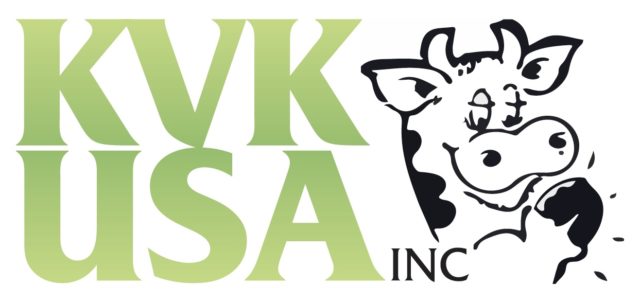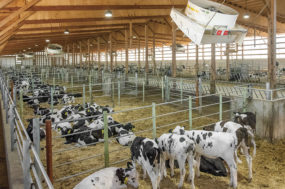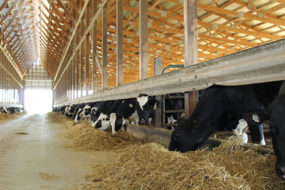Preventing animal abuse starts with appropriate training about animal care. Thereafter, reporting inappropriate care is paramount. A new initiative developed by dairy and pork associations aims to raise awareness that it is the responsibility of all who work with livestock to report the mistreatment of animals.
The initiative provides materials for owners to teach and empower their employees on how to take action when mistreatment occurs.
Progressive Dairyman editor Walt Cooley discussed the initiative and how it fits into the FARM Program’s animal care guidelines with NMPF’s Director of Regulatory Affairs, Betsy Flores and CFI’s Senior Project Manager, Roxi Beck.


FLORES: The scope of the initiative is to empower employees to say something when they see something wrong with animal care. It is a tool that can be used to let employees know it’s OK to speak up and that they are not going to be in trouble or in fear of losing their jobs if they do say something.
The initiative teaches mistreatment of animals is not tolerated or accepted by the farmer, and an employee is doing the farmer a service when an employee actually comes to an owner or manager and lets them know about it so they can take action to nip these things in the bud.


BECK: The National Milk Producers Federation, the National Pork Board and the National Pork Producers Council have all funded the development of the initiative evenly.

So is See It Stop It a national hotline livestock workers call if they see something wrong?
FLORES: No, it’s not a program that gives employees a number to call the Society for the Prevention of Cruelty to Animals or other local enforcement agencies. Rather, it teaches employees who they’re supposed to contact on the farm – be it the owner or the manager – to report animal care issues so action can be taken.
If a manager looks into a reported incident and determines it truly is an act of abuse that needs to be reported to authorities, then it’s the responsibility of the producer to make that call to let things go through appropriate channels.
I do know that other livestock groups, whose industries are more vertically integrated or corporate-owned than the dairy industry, some of them have set up hotlines for their employees to call within their company.
But for dairy, the training is geared toward teaching who the employees need to contact on the farm if they see something. That’s what would be put on the poster provided as part of the materials and hung up in the barn or the break room.

How do you recommend dairymen use the initiative’s materials?
FLORES: Dairymen should bring their employees together and have a discussion about animal care. Sometimes this isn’t the easiest or most comfortable thing to talk about.
The initiative’s discussion points open the door to having a conversation with employees and to making it very clear what the farmer’s expectations are and the importance of animal care on the farm: First, that animal abuse is not acceptable, and second, it is an employee’s obligation, if they see something, to tell management so it can be handled immediately.

What was the genesis for this website and educational material?
FLORES: Farmers need a way to express their values and their expectations to their employees in a very clear way. They need bilingual resource materials they can use to educate and empower their employees.
The important part of the campaign is to let employees know it’s OK to speak up because it’ll give the farmer an opportunity to look into the issues and take action, if necessary.
With these materials they could, for example, have a clear, concise way of expressing animal care values and a sheet that new and current employees can sign to make sure they understand what the expectations are and that it is the employee’s responsibility to say something if they see something wrong.

How much did the most recent undercover abuse video from a dairy in Idaho influence the development of this initiative?
FLORES: We were talking about this initiative before that video. We were approached by the Center for Food Integrity last summer, initially, and we were also approached by some of our member co-ops and producer groups in the Northeast who were looking for this sort of information.
And we thought this would be a great opportunity, especially since we could work with other livestock groups. The great thing about this initiative is that any livestock producer can utilize the materials.

How will See It Stop It integrate with the FARM initiative?
FLORES: It will be a resource. If a producer utilizes this initiative and has done training with their employees, this would meet the guideline on animal care training for the FARM Program.

So what types of mistreatment does See It Stop It recommend employees report?
FLORES: I think there are varying levels of what could be reported to management through this initiative, such as neglect or willful mistreatment. The initiative aims to change the culture of employees not wanting to snitch on a co-worker, get in trouble with the owner or avoid upsetting the owner to one in which employees want to report an incident to the owner because it is the right thing to do.
Obviously, the owner isn’t going to be happy with the situation, but employees will know they’re going to make the owner happy because you reported it so they can do something about it.

Do animal care groups support this initiative?
BECK: The American Humane Association, the Humane Society of the United States and Mercy For Animals were asked to review the initiative and provide their support. HSUS declined to participate, and MFA was unresponsive. AHA said: “We believe ‘See It? Stop It!’ provides the tools to help set those expectations and a mechanism for reporting abuse which supports the proper care of America’s farm animals.”

Are other livestock groups besides dairy and pork associations welcome to sign on to the initiative?
BECK: We have been in discussions to make that happen. Partnership by additional groups provides them with the benefit of clear direction and tools that empower employees working with or around animals to report instances of abuse, harm, mistreatment and neglect,
consistent with their animal care initiatives. PD
Go to the See It? Stop It! website to download and print free employee animal care agreement forms and break-room notification posters.



